Ramp leaf garum is a fermented, plant-based substitute for fish sauce made from ramp leaves, salt, water, and time.
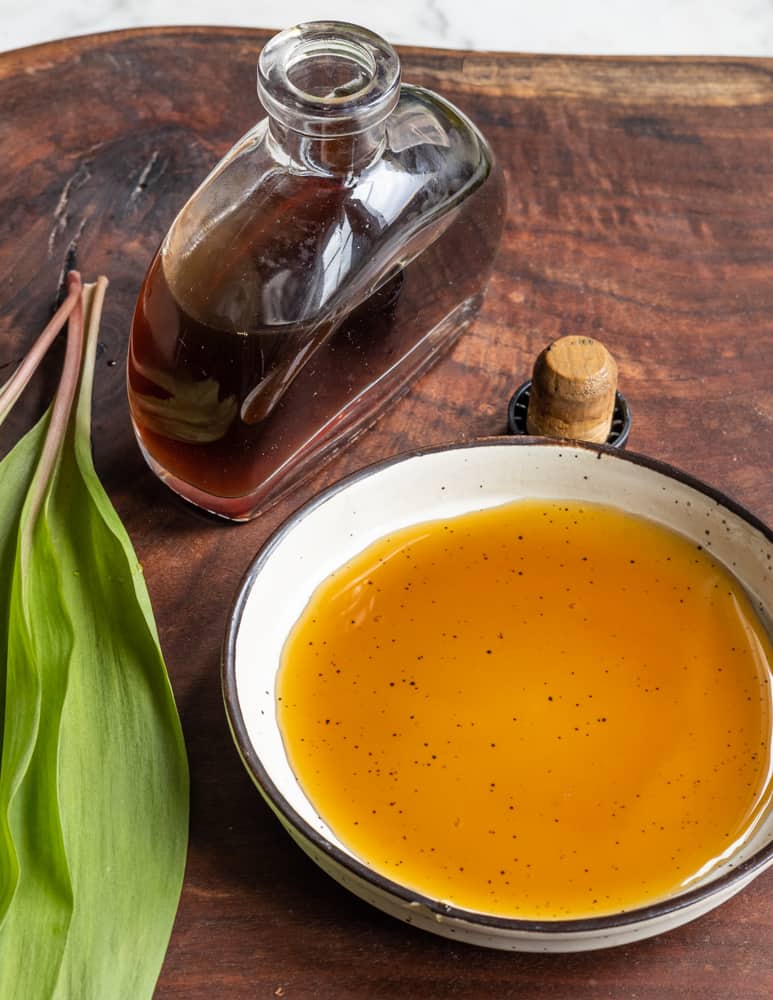
A few of my chef friends have been trying to make vegetarian fish sauce recipes using different things to replicate the umami flavor. Most of the techniques include lots of ingredients like coconut aminos, shiitake or other dried mushrooms, soy sauces, alliums and other things.
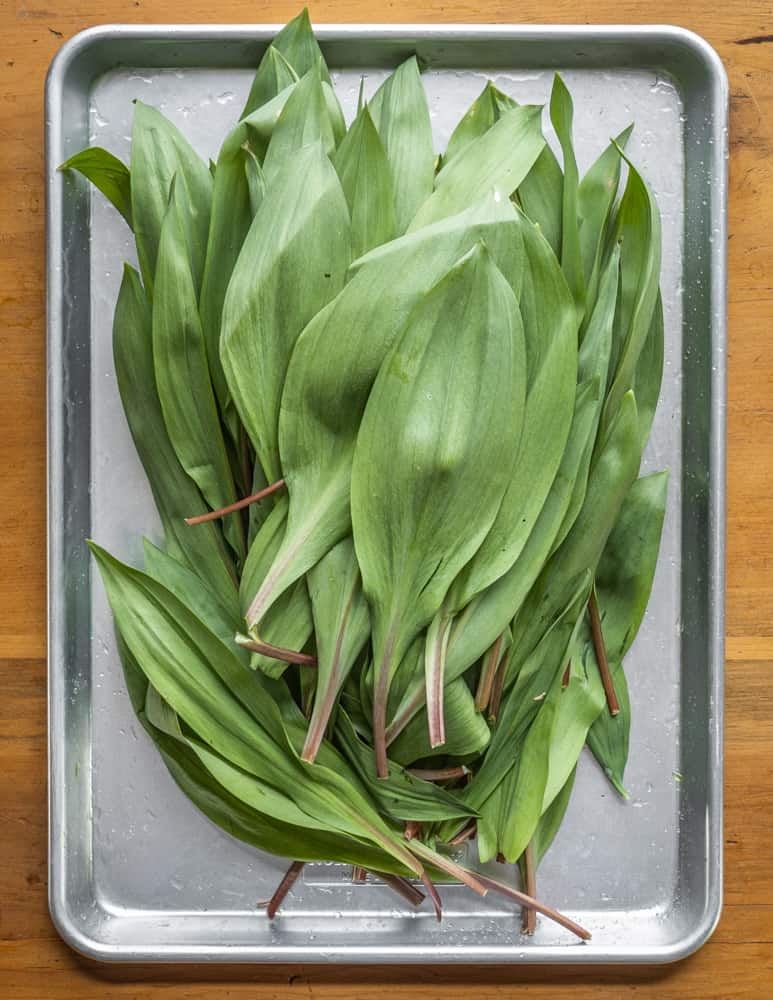
I had an idea to make something similar with fewer ingredients. My goal was to make a version made from from foraged ingredients, specifically ramp leaf juice. To be clear, this technique won’t be for everyone as it requires some equipment, but the chefs who’ve tasted it so far have been impressed.
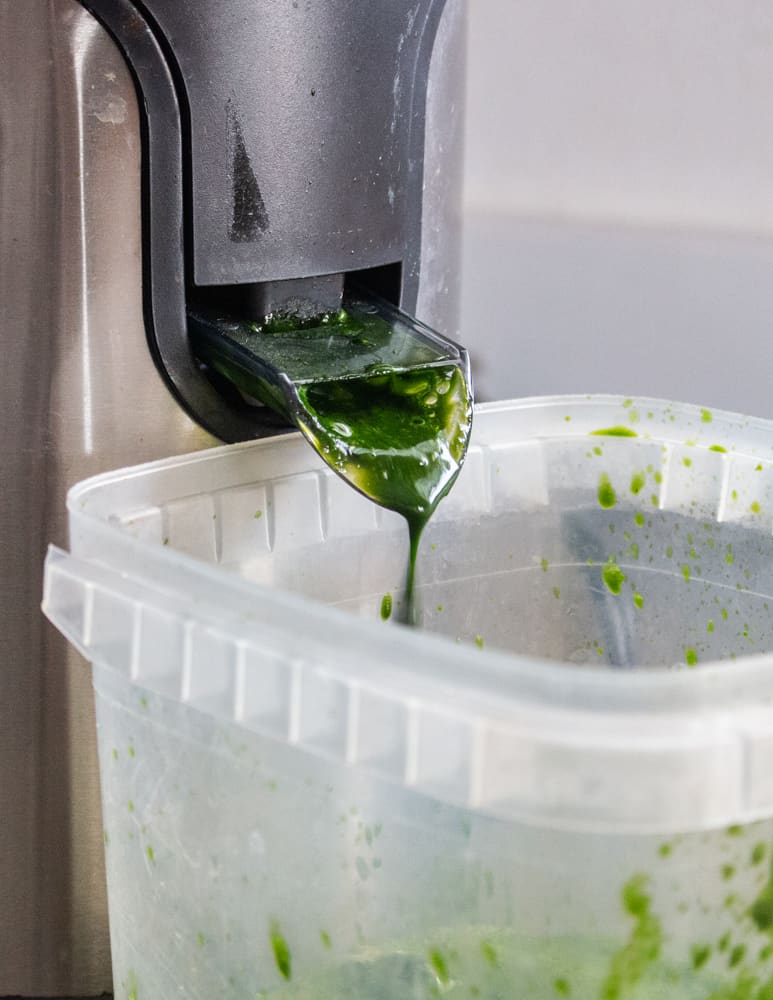

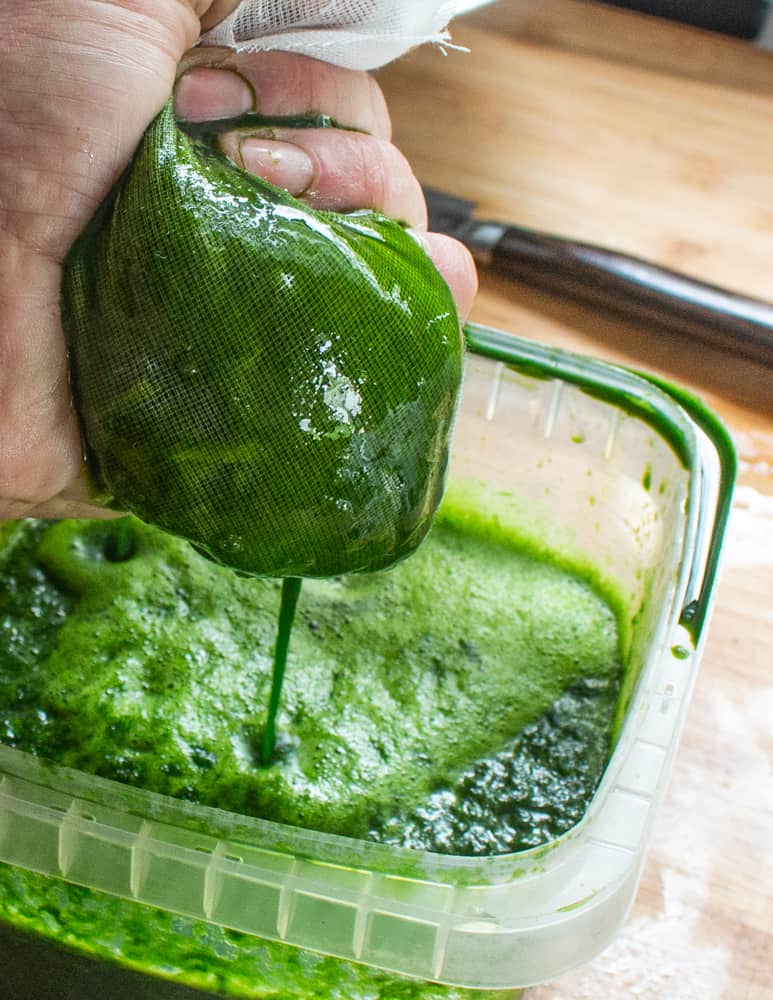
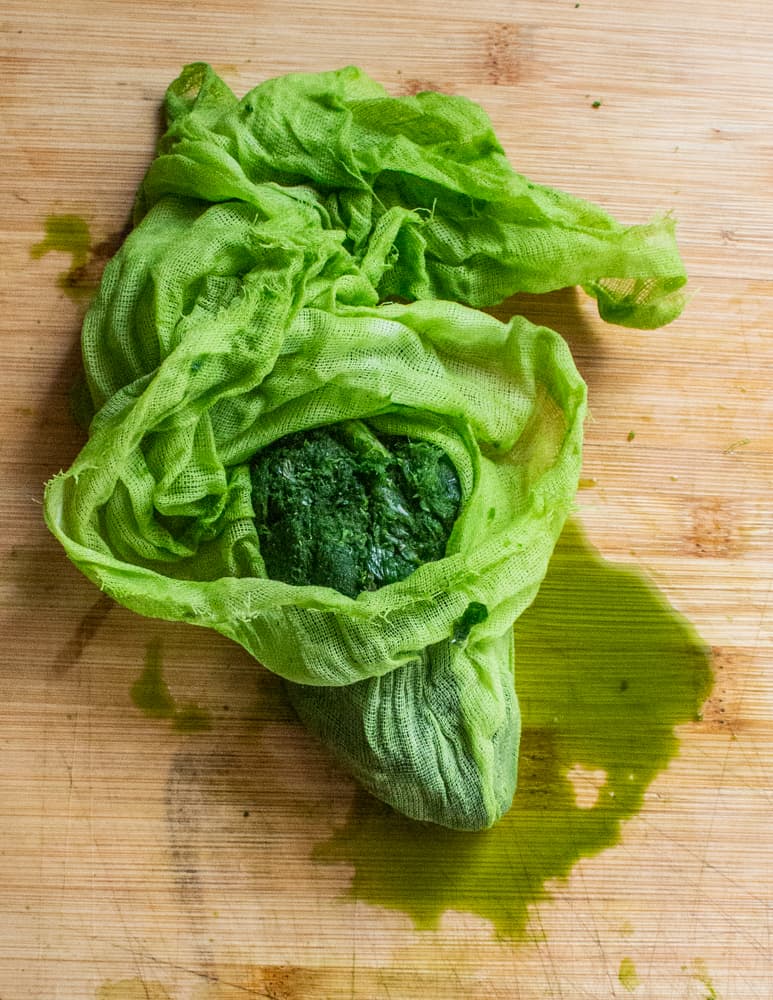
After enjoying my meat garum recipe I modified from the Noma Guide to Fermentation and becoming obsessed with the almost fishy flavor of fermented ramp leaves, I knew I could make something from ramp leaf juice. Koji rice was one of the key ingredients.
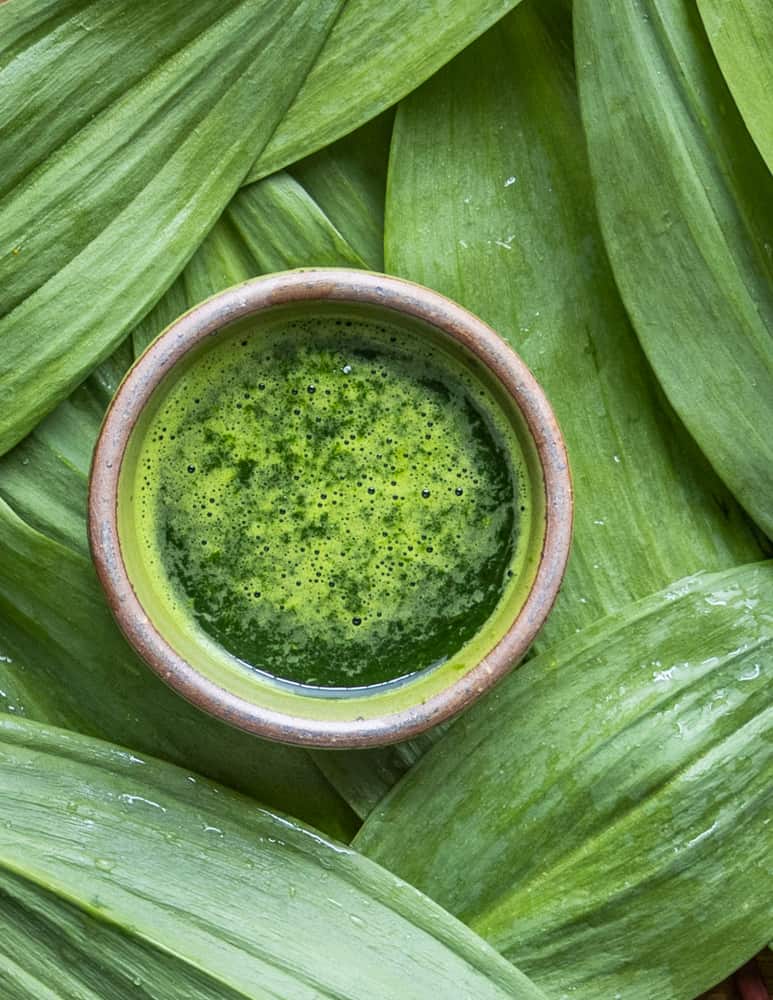
Koji: The Secret
Here's how it works. For something like sauerkraut, I might season cabbage with 2% of it’s salt by weight. Soy sauce and garum usually have a concentration of around 18% salt. 18% is too salty for the liquid to ferment on its own, but the beauty of koji fungus is that its able to lacto-ferment liquids that are high in salt.
To make the sauce, I combine pure ramp juice with koji rice, salt, and chopped ramp leaves. After the liquid has fermented for a couple days, I put the jar in a dehydrator and cook it slowly at 145-150 F. Over a period of thirty days the low heat causes a Maillard or browning reaction. The slow browning turns the yellow brine a rich caramel color, as well as adding toasted notes and depth of flavor.
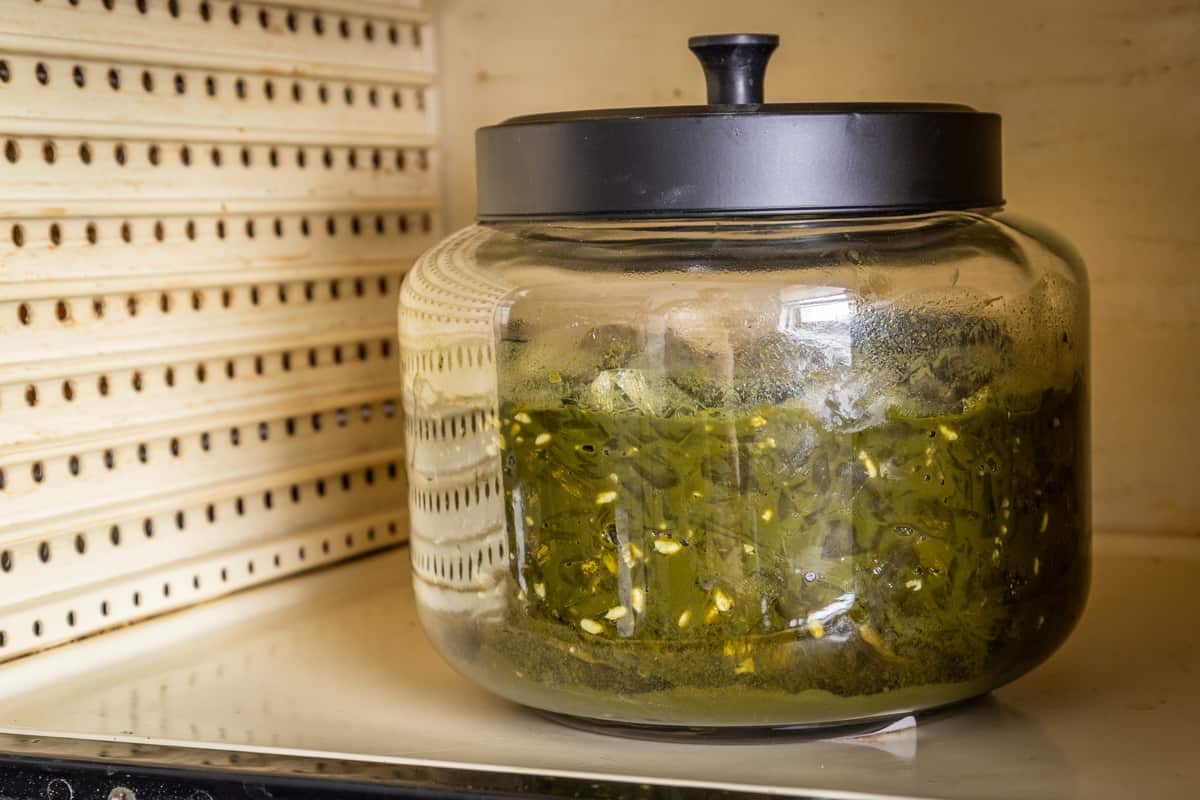
Necessary Equipment
The ingredient list is small. All you need is some koji rice, lots of ramp leaves, a little water and salt. The equipment is the most important. Here's what you'll need.
- Goggles (to protect your eyes from ramp fumes).
- A juicer.
- Wide fermentation vessel.
- Large box-style dehydrator.
- Gloves (optional)
There’s a few different ways you can make this using other combinations of equipment. I’ll try to describe how that might be done below. If you experiment with a different method that works, please let me know.
Simplifying the recipe
- No ramp leaves? You might try using half onions and half garlic, starting with the same weight of the ramp leaves in the recipe.
- Instead of a dehydrator, some people have used a rice cooker to slowly heat liquids.
- If you don’t have a juicer, you can puree ramp leaves in a blender with water.
- If you don’t have koji rice, you can ferment the liquid with a 3% salt concentration first, and add the rest of the salt after the fermentation.
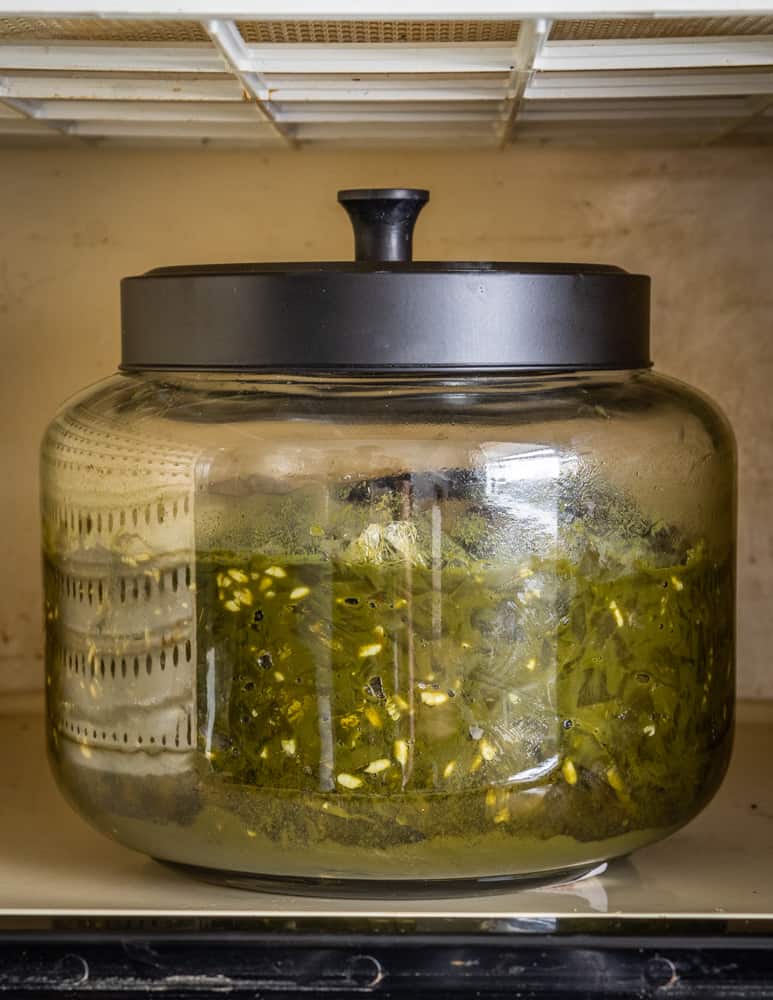
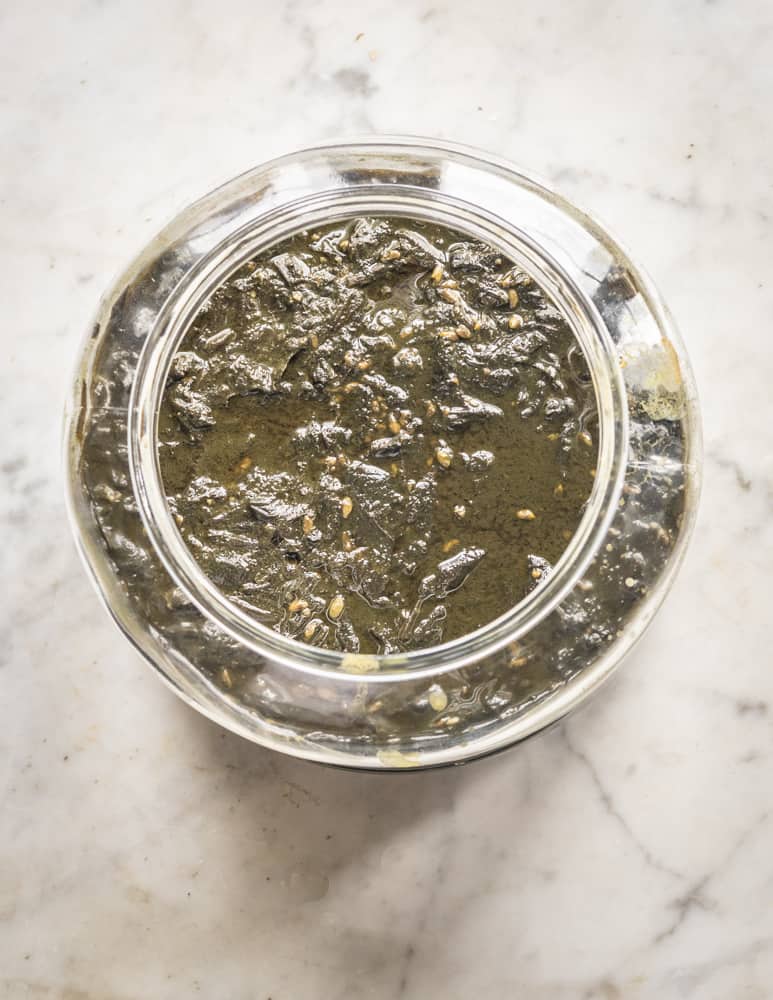
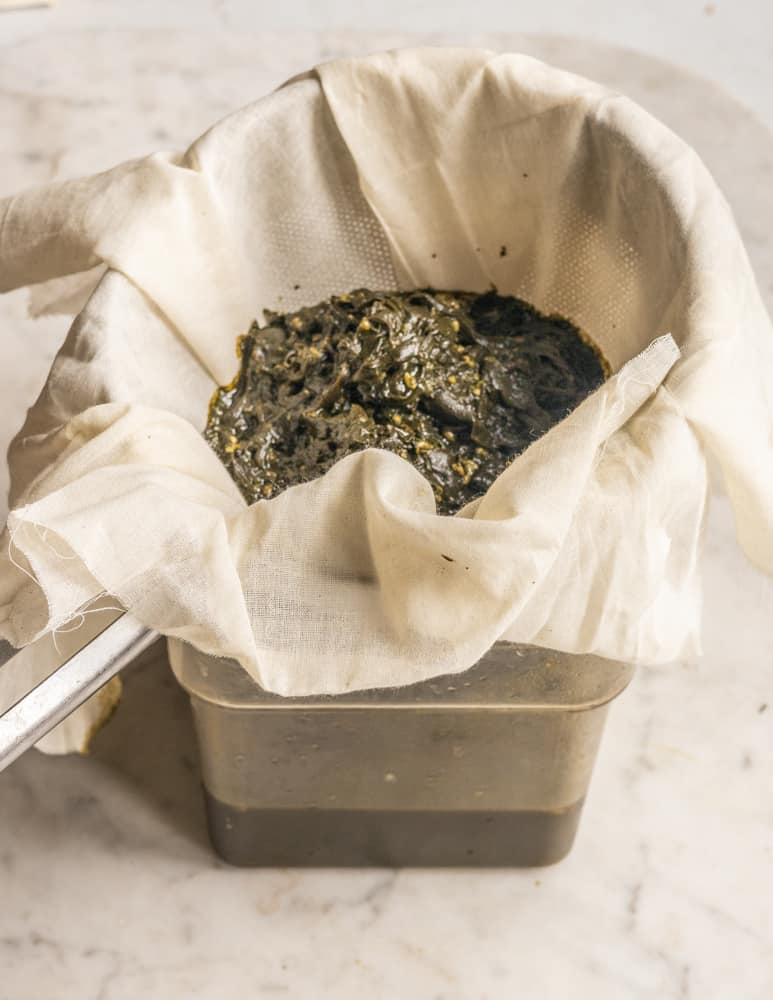
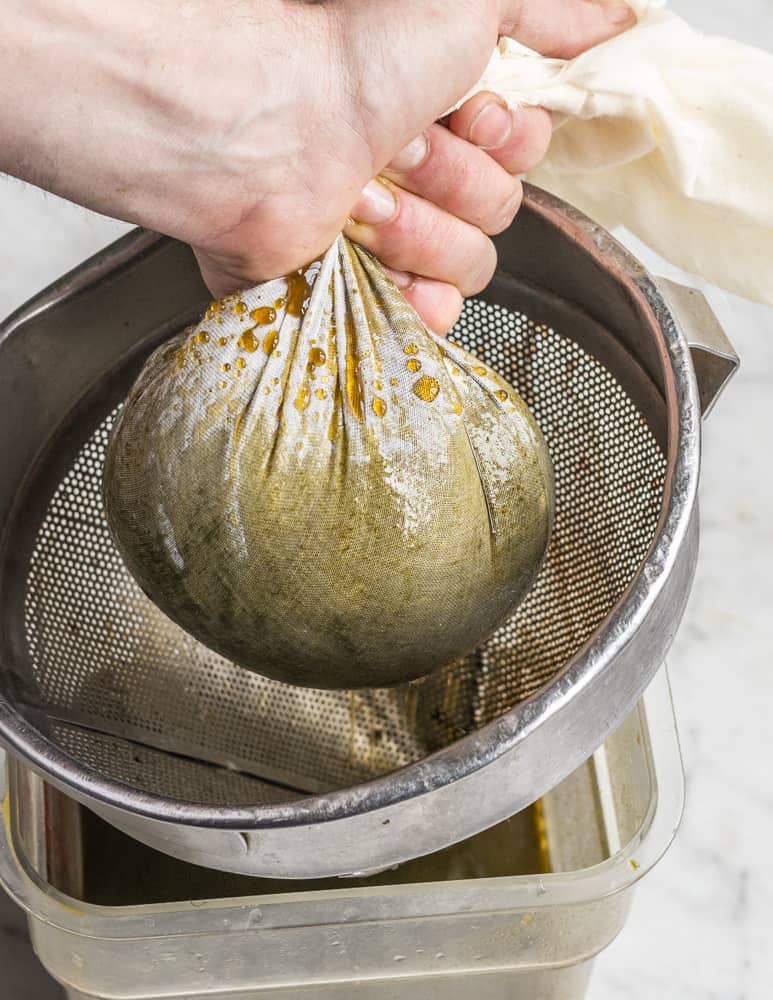
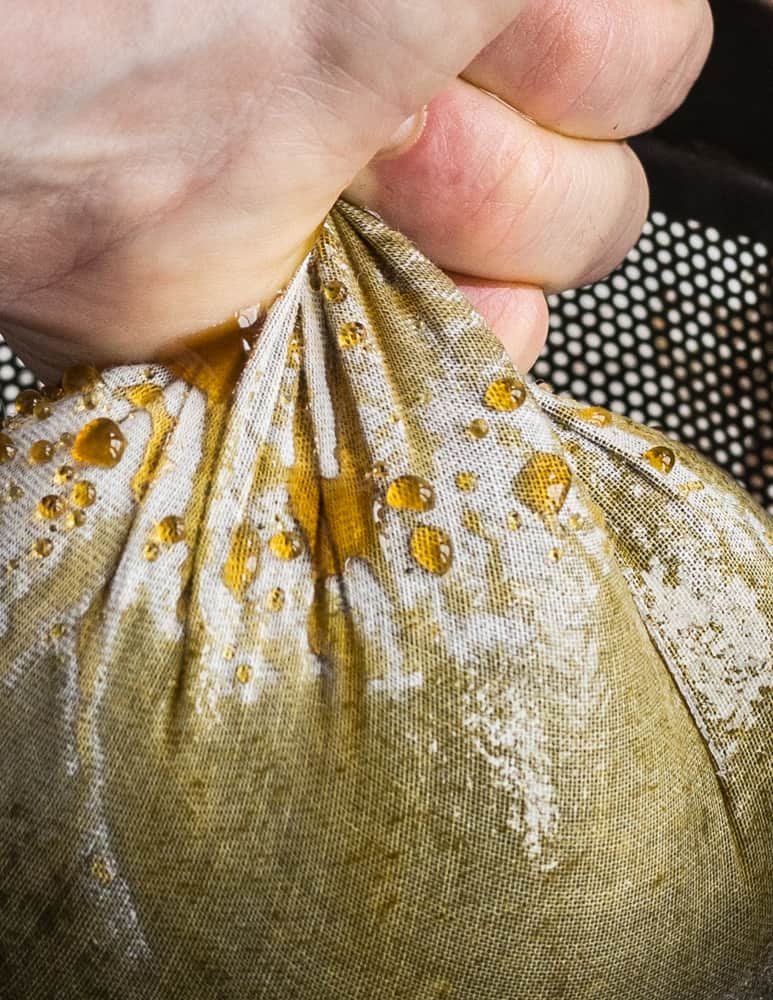
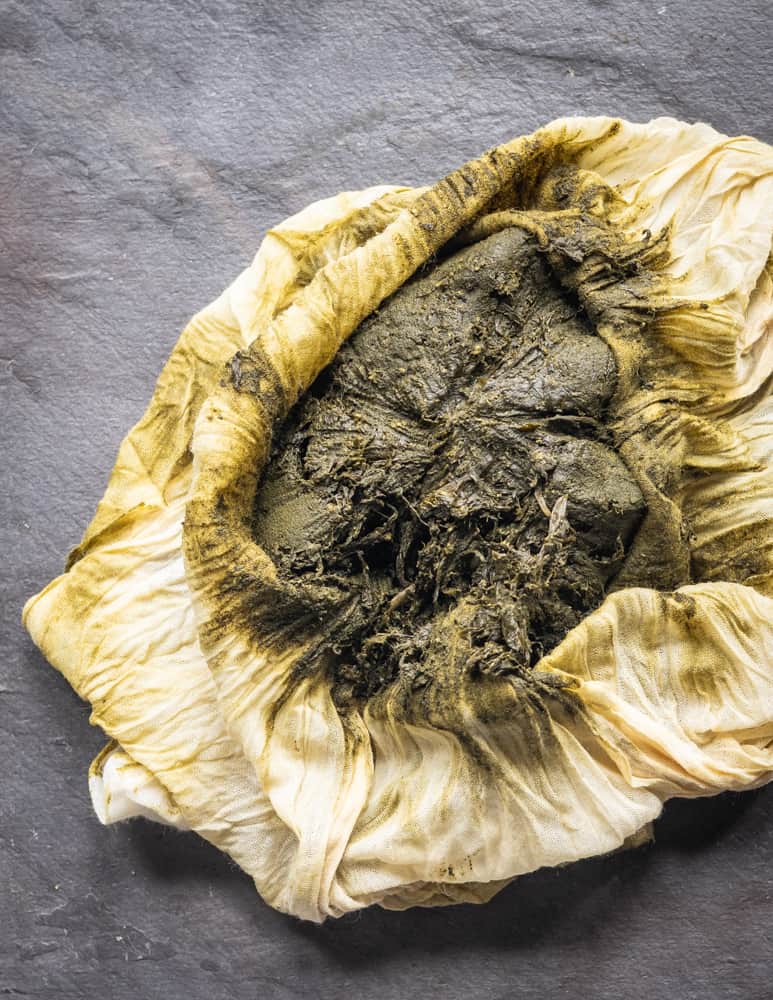
How to use it
The finished sauce is a fish or soy sauce substitute that tastes like toasted ramps, and you can use it anywhere you’d use fish sauce. Here's some tips I've noted after a year of cooking with it.
- You can use the sauce for all-purpose cooking for say, pad Thai, but you’ll have to use a little extra as the flavor is more mild than regular fish sauce.
- I like it best by itself or mixed with only a few ingredients.
- It makes great Japanese-style dipping sauces.
- For a tempura-style dipping sauce, mix 2 parts ramp garum with 2 parts maple syrup or mugolio, 2 parts mirin and 1 part dashi broth, vegetable stock or water, or to taste.
- Mixed with melted butter and a squeeze of fresh lemon it’s great spooned over baked or steamed fish.
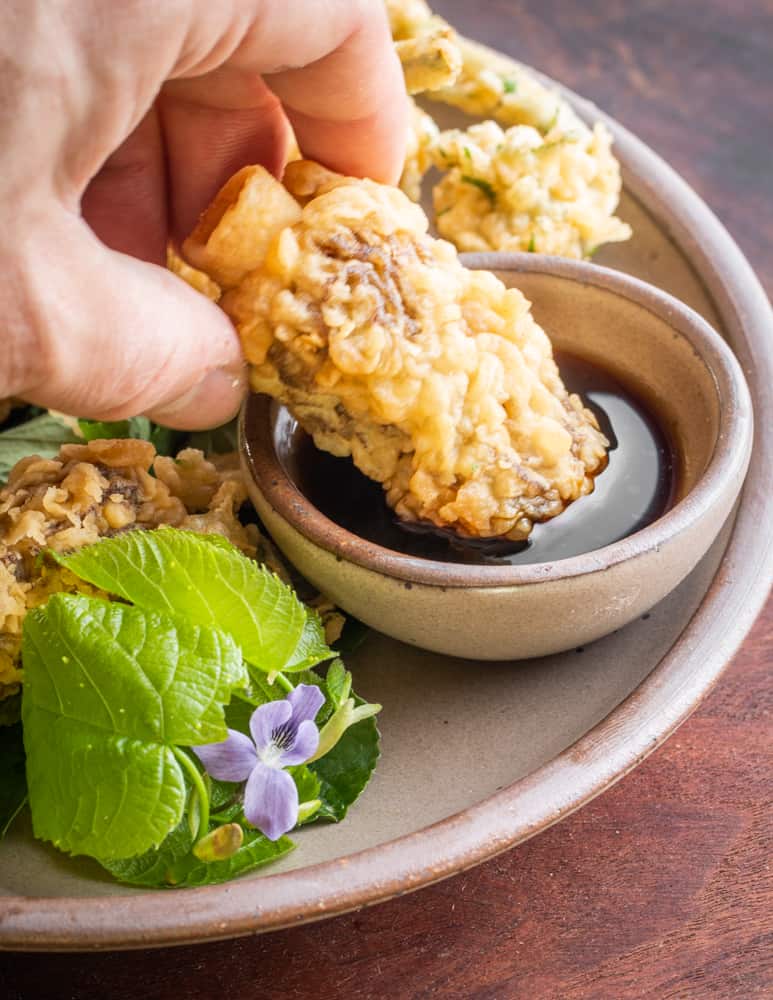
I hope you've enjoyed this foray into experimental cooking. Whether you get inspired to make your own vegetarian fish sauce or not, I think we can all agree that the potential of what you can make with ramp leaves is only limited by your imagination.
Related Posts
Ramp Leaf Garum (Vegan Fish Sauce)
Equipment
- Goggles
- Masticating juicer
- Large box-style dehydrator
- Cheesecloth, as needed
- Disposable gloves
Ingredients
- 400 grams fresh ramp leaves
- 240 grams salt
- 1300 grams strained ramp juice from roughly 2000 grams of ramp leaves
- 120 grams koji rice
Instructions
Juicing the ramp leaves
- You know when your eyes tear up when you cut an onion? Think of juicing ramp leaves as that on steroids. I recommend wearing goggles while you juice, but if you’re of a certain constitution you can get by without.
- Put small handfuls of whole ramp leaves into the juicer and extract the juice. As you work, if your juicer's like mine, it may start to gum up with ramp leaves. Pour a splash of water into the juicer chute occasionally to help the liquid move.
- Eventually the pulp catcher will fill up with ramp pulp. Remove the pulp and set it aside in a bowl.
- After the ramp leaves are juiced, put on a pair of gloves, then put handfuls of the ramp leaf pulp into cheesecloth. Wring out the remaining juice from the pulp into the juice from the juicer, then set the leaf pulp aside for another purpose, like fermenting or making green curry paste.
- Strain the ramp juice (optional). You can add any solids to the squeezed ramp leaf pulp if you want.
Assembling the Garum
- Rough chop the fresh ramp leaves, then combine with the salt and rice in a clean, wide vessel you can fit inside a dehydrator or similar contraption that can slowly heat things. Some people use a rice cooker.
- Gently crush the leaves with the salt and koji rice using a wooden spoon for a minute to reduce their volume.
- Pour the ramp juice into the vessel with the ramp leaves and rice, stir with a long utensil and top with a lid. Ferment the mixture at room temperature for 5 days.
Slow Cook for 30 days
- Transfer the jar to the dehydrator or other cooking vessel and heat at 145 F (high) for 30 days, or until the liquid is dark and syrupy.
- I put a layer of clingfilm pressed onto the top of the mixture to prevent water loss, but you can probably get by without it. If you do, weigh the finished liquid and replenish the water that evaporates.
Finishing
- Strain the liquid off into a strainer lined with a generous amount of cheesecloth. Wearing gloves, wring out as much juice from the cooked ramp matter as possible. I found it helpful to massage the mass to get out the juice.
- Discard the ramp leaf mash and thank it for the service it provided. Store the garum in the fridge to prevent it from developing kahm yeast and to keep the best flavor.
Video
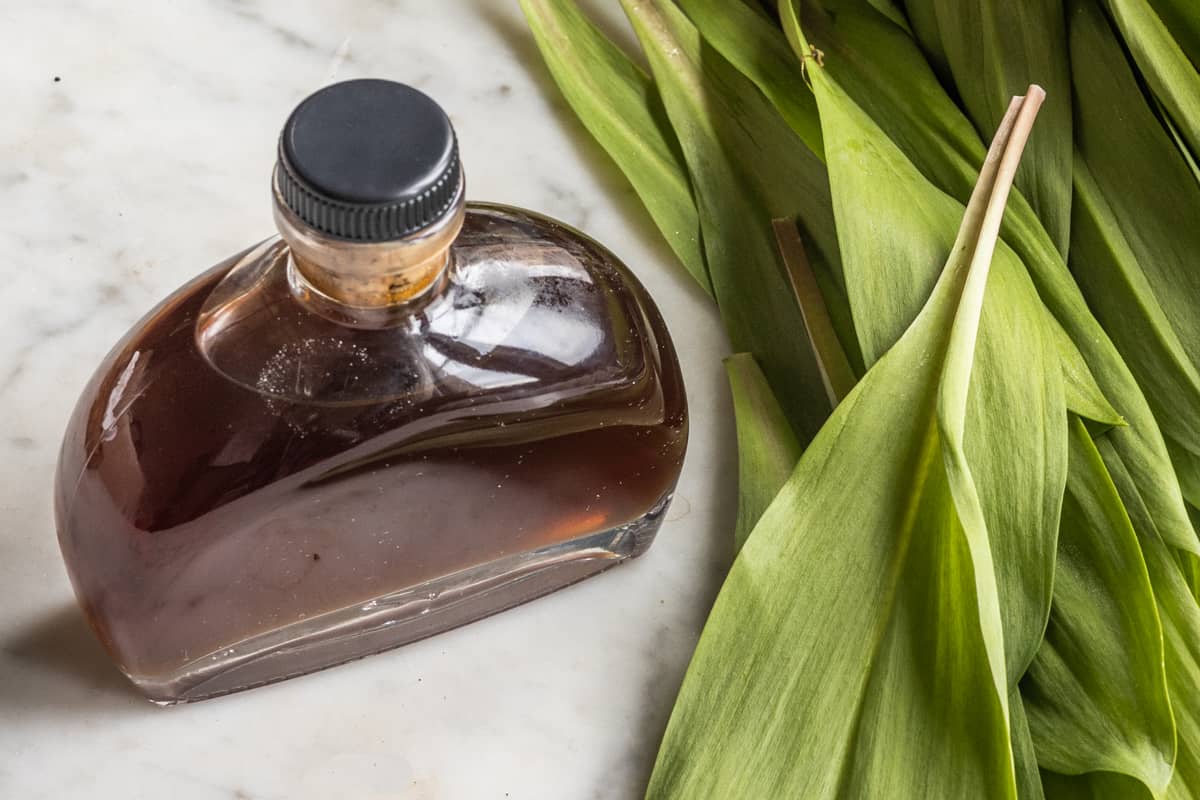

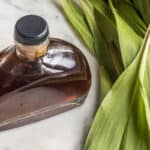
Joey
The amount of Koji used can affect the taste and food safety ?
Thank you
Alan Bergo
Yes, but as this recipe is cooked for so long and has a high salt content it's very safe. I'm still cooking with this batch and it's two years old.
Joey
Hi chef,
I'd like to ask u that as mentioned above about the percentage of salt usage is 18% by the total weight. But in this recipe just 14%. So why do u decrease the amount of salt?
And for you what is the ideal percentage of koji rice for garum? ( even for meat or shellfish and vegetable?
Thank you so much
Alan Bergo
14% is plenty, but you can go up to 18. Different soy sauces can vary in concentration. The right amount of Koji for me is the amount that gives me dependable fermentation. Some recipes will use more.
Joey
The amount of Koji used can affect the taste and food safety ?
Thank you
Anthony DELFAU
Thank you for sharing.
How long does it keep in the fridge, please?
Thank you
Alan Bergo
It could be used to preserve other things, meaning indefinitely.
Joe
Hi Chef,
Do you think you could vac-pack (or just jar) the garum and cook it sous vide for a month?
Thanks for any help you can offer!
Alan Bergo
Id think that would be possible. Although there is something about dry heat and I worry it wouldn't get brown/caramel-colored on you. I don't know though as I haven't tried it. You would need to keep the water level constant and keep it in a cooler obv. If you try it and it works for you let me know, that would be another workaround to add here. The dehydrator I use is old and doesn't automatically shut off so I know it can be tricky for people to mimic my setup.
Michael
Yeah, it's going to 30 days of restarting my dehydrator 😀
What's the smell-level like during these 30 days. Would you venture doing this in an apartment?
Cheers and thank you for some great content.
Michael from Denmark
Alan Bergo
Hi Michael. The images from this post were actually taken when I had an apartment. If you have a container with a snug fitting lid there will be less aroma. If you take the lid off, the aroma will quickly fill the room.
Michael Peo
Great news, I'm gonna give it a go, if there are still ramps in my part of the woods.
Thanks!
Alan Bergo
I'm here if you have any follow up questions.
Michael Peo
Hi again Alan!
Followup question. How is the mixture supposed to develop the first little week at room temp?
Mine doesn't really look or smell all that different from when i started. A little bit darker in colour, thats about it.
Anyways, i'v made a box to do the long run. Thermobox with a reptile matt in the bottom controlled by a thermostat. Cant wait to see how it develops.
Thank you for your time and content.
PS: I have pics.
Ian
On the topic of Garums, I recently stumbled across this chef using enzymes to make garums in hours instead of months:
https://www.culinarycrush.biz/all/3-hour-garum-recipe
Alan Bergo
Yeah I've tried quick ones and a friend sent me that. There's really no substitute for slow development of flavor though in my mind-short cuts are often just that.